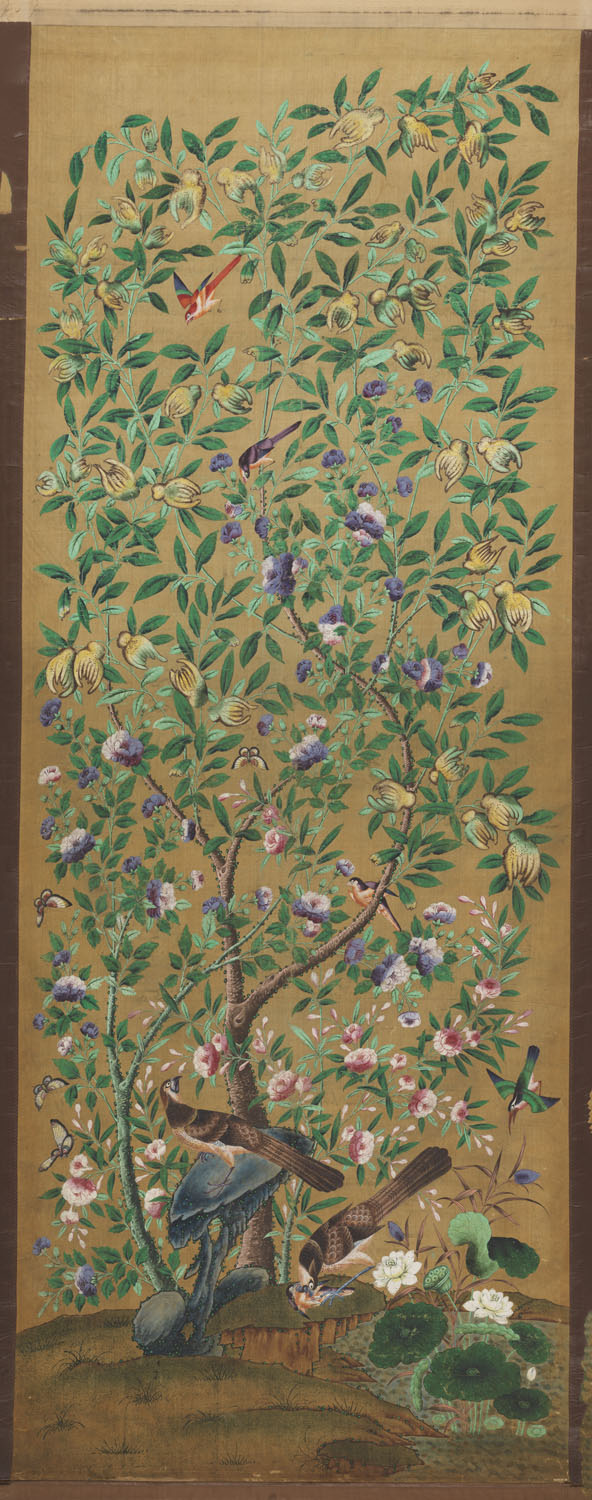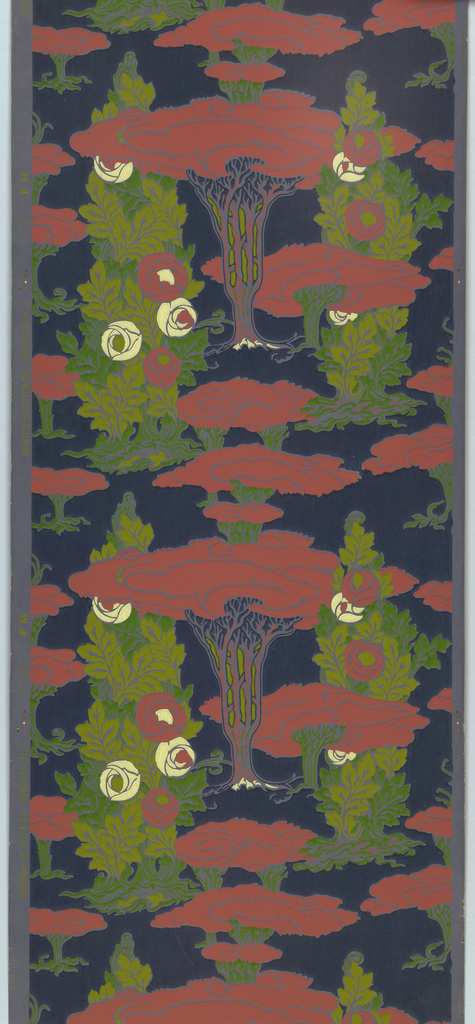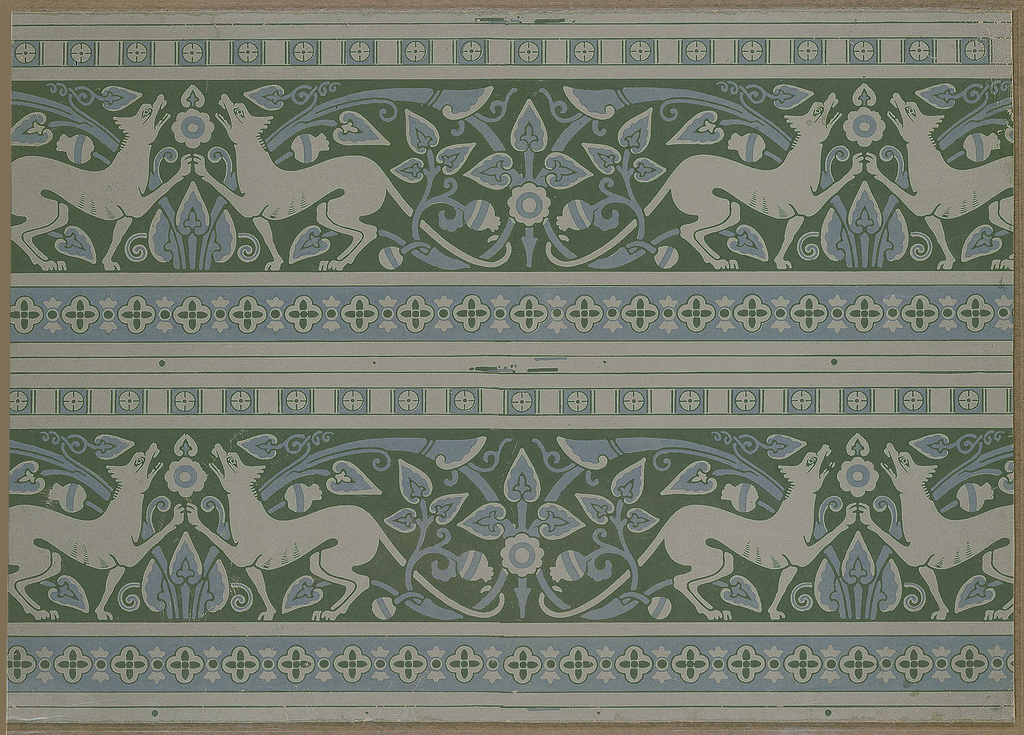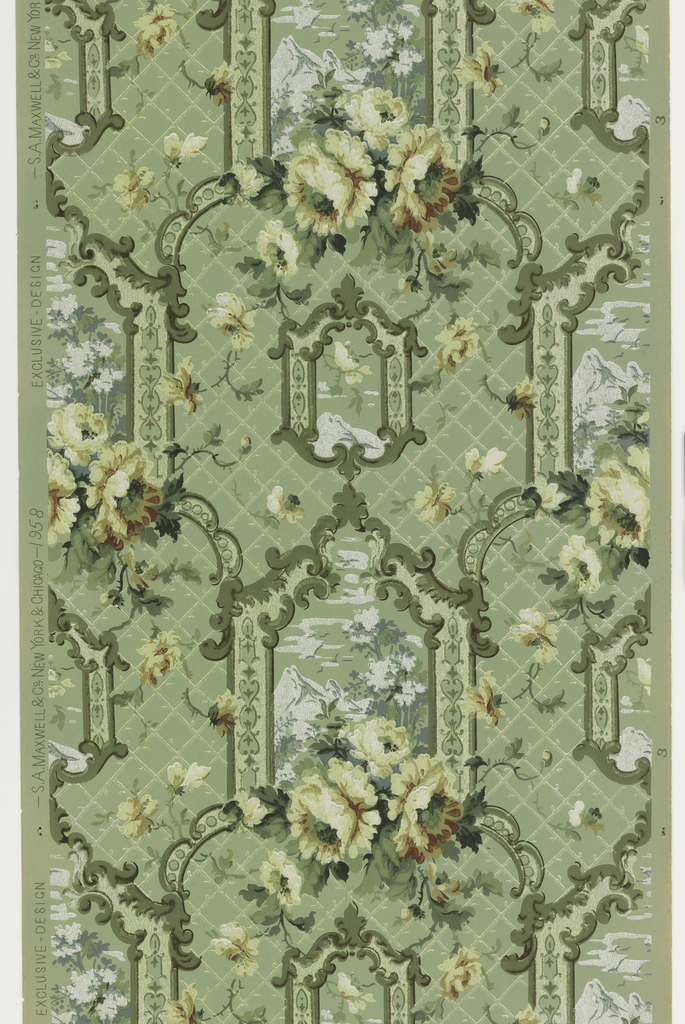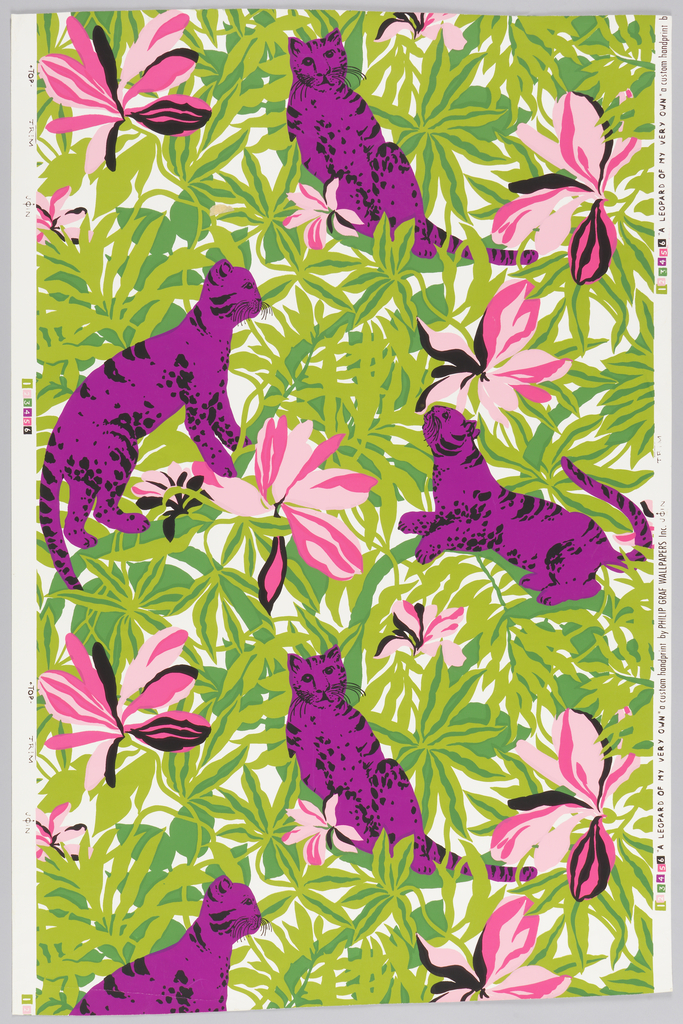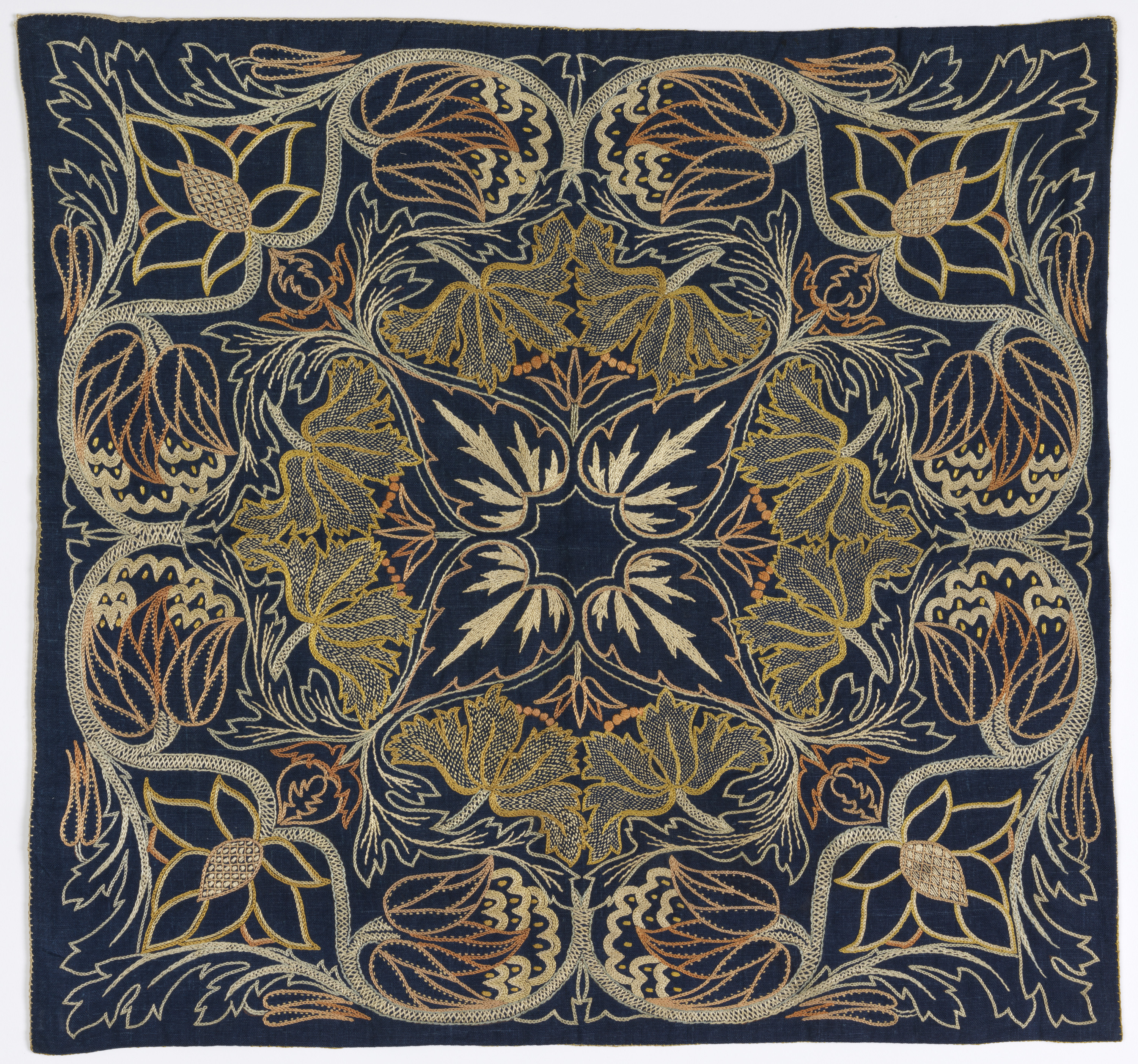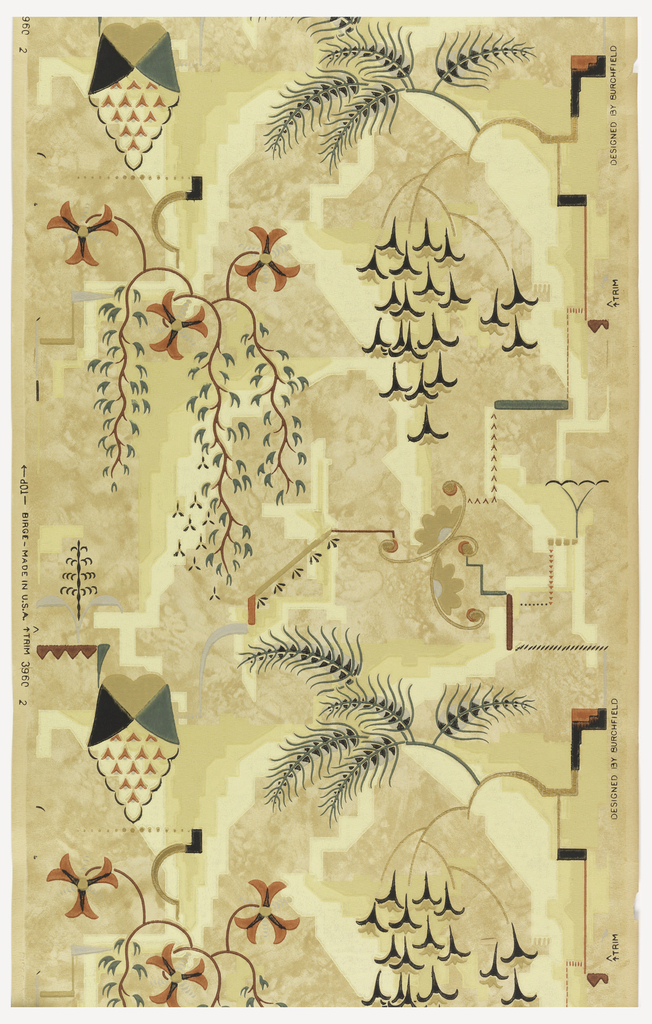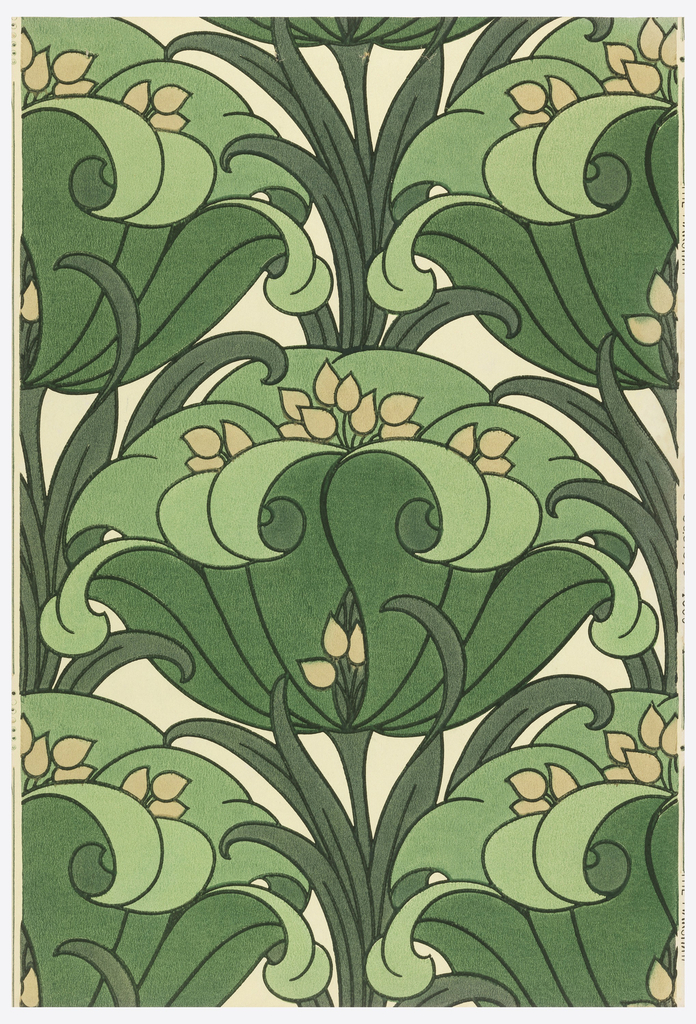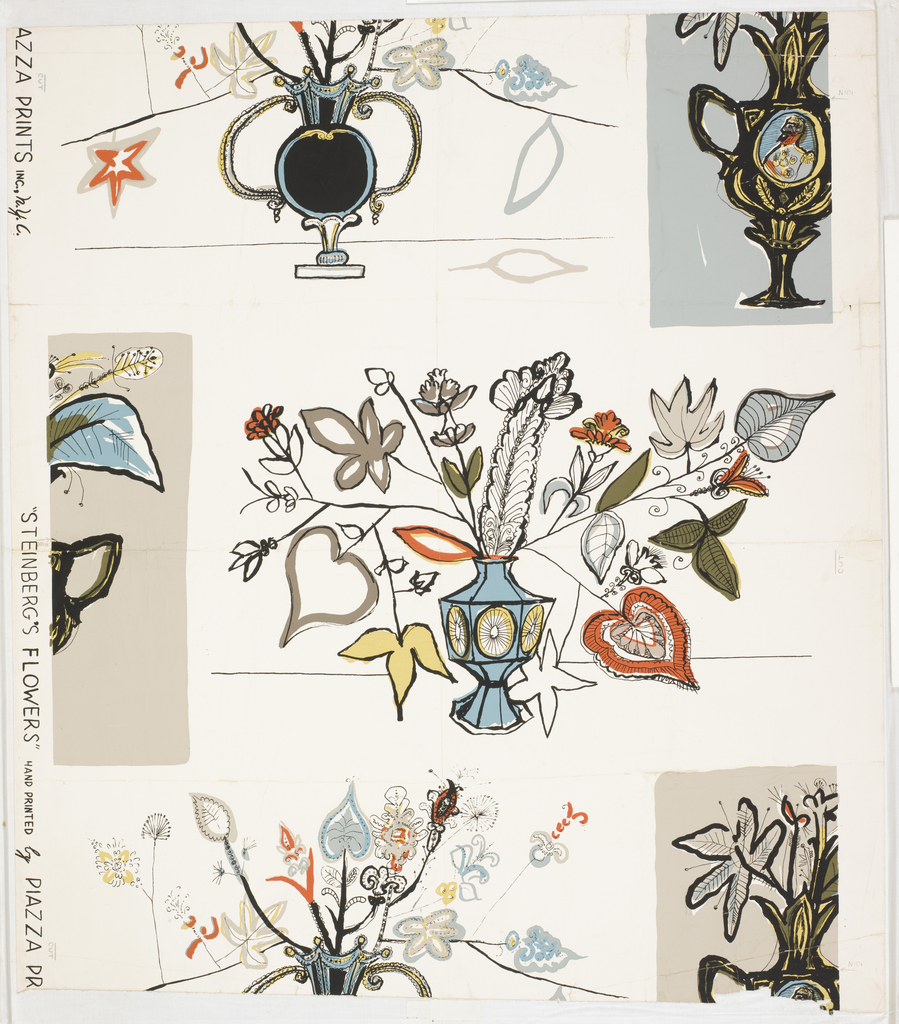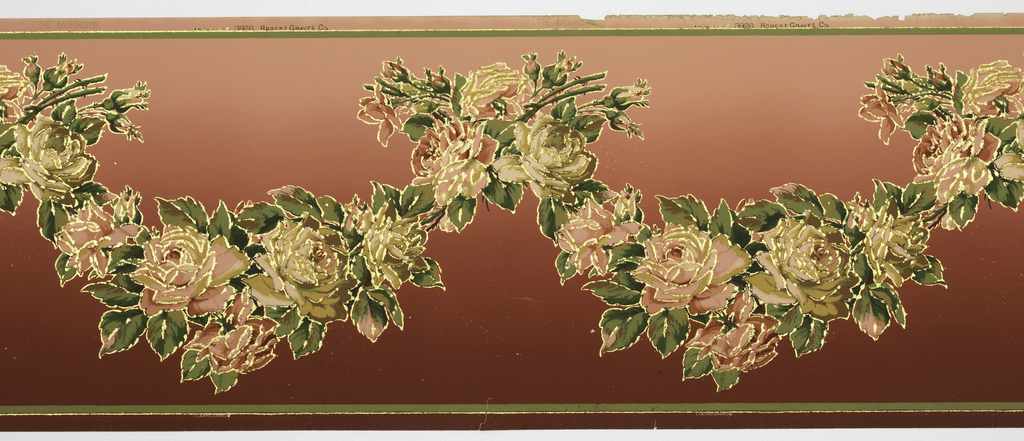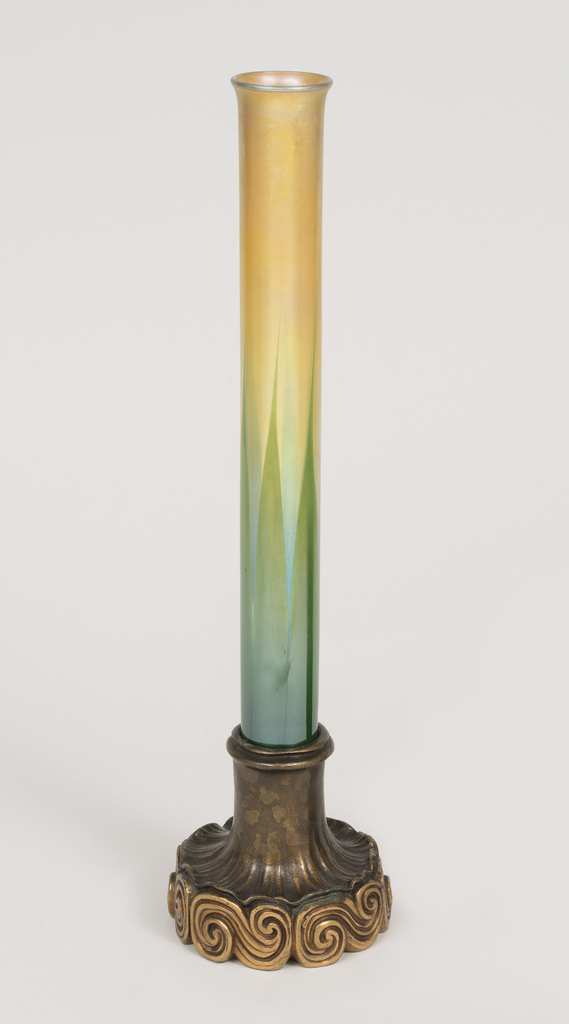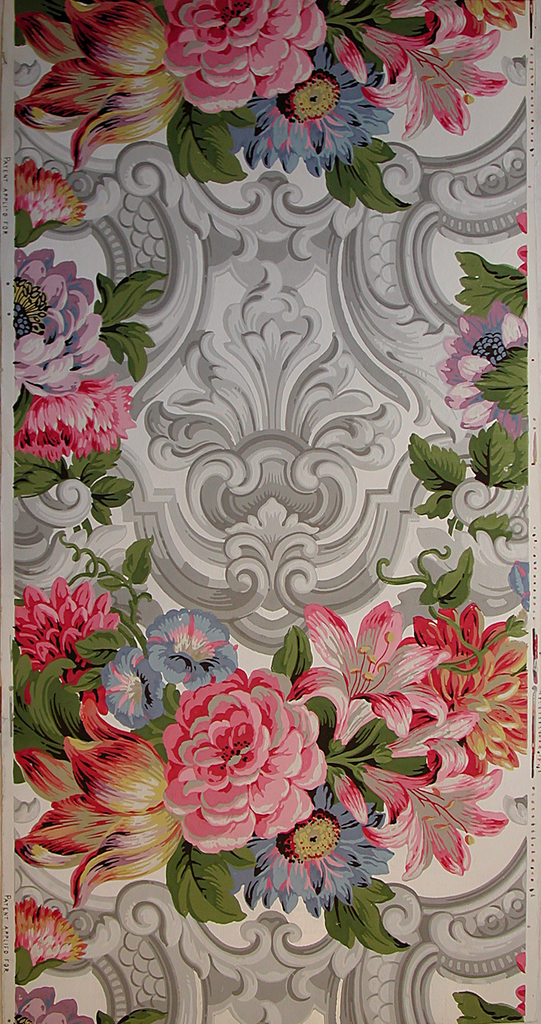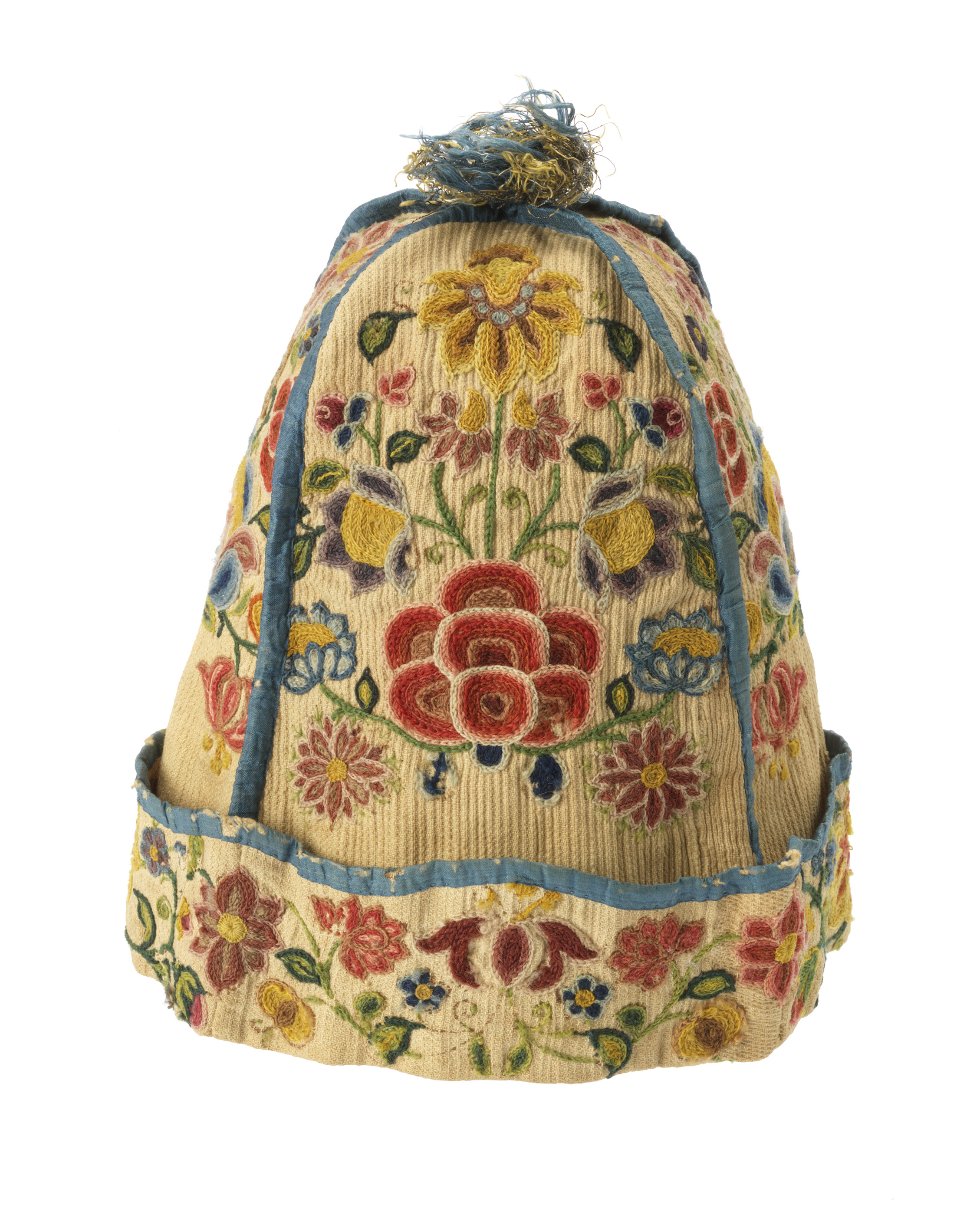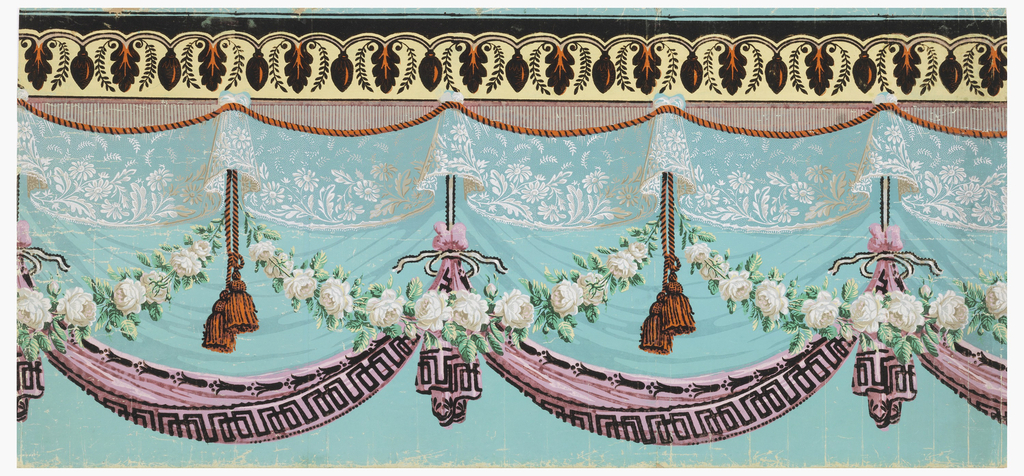I recently had the pleasure of photographing two rather large window shades that had never really been viewed before, due to their large size and fragile nature. These are part of a group of four shades, with each being contained in a rather simple but elegant wood cornice. The two shades that were photographed had...
Floating trees with foliage like red clouds form the dominant motifs of this unusual, slightly psychedelic early twentieth-century sidewall. This excellent example of an Art Nouveau-style paper was made by Benton, Heath, & Co. of Hoboken, New Jersey. American wallpaper producers first started making papers in the Art Nouveau style in the mid-1890s, after examples...
This wallpaper shows two sections of a frieze design by the architect and designer William Burges. Known as one of the pre-eminent practitioners of the Gothic Revival style in Britain, Burges was known for his obsession with the Middle Ages, and he frequently referred to himself as a “Goth.” Perhaps his most famous works include...
Landscape views have always been a popular theme on wallpaper, and with good reason. For the urban migration during the Industrial Revolution it allowed people to bring some country with them. For rooms with few windows or no view, the wallpapers provided one. The trompe l’oeil aspect of landscape papers also visually enlarged the size...
This is a charming children’s wallpaper that would also be appropriate for a powder room. The design is naively styled with its cast of three leopards, exotic flowers, and lush foliage. The leopards are performing various acts of lounging or exploring, with the one directing his gaze directly at the viewer. The design is quite...
May Morris will forever be in the shadow of her famous father William Morris, the chief protagonist of the English Arts and Crafts movement, and of her mother, the Pre-Raphaelite beauty Jane Burden. Yet she was an accomplished artist in her own right, a fact evidenced by the skillful design and craftsmanship of this cushion...
Charles Burchfield is one of the best known American watercolorists of the 20th century, painting urban street scenes as well as more rural landscapes in a rather sullen fashion. It is less well known that he designed wallpaper, working for the M. H. Birge and Sons company in Buffalo, New York, from 1921 until 1929,...
This wallpaper was once part of a showroom sample book that was unbound at some point and then later donated to the Cooper Hewitt. The samples are a nice group of art nouveau and Mission-style wallpapers. This paper is a good example of American art nouveau design with its large-scale floral motif filling the width...
This sidewall was designed by Saul Steinberg (1914-1999), a Romanian/American artist much loved for the dozens of covers and twelve hundred cartoons he drew for The New Yorker. Here, his characteristic ink-work has been expertly copied by the screen printing processes of Piazza Prints, who manufactured this paper c. 1950-1955. Against a white ground, widely-spaced...
Jack Lenor Larsen (b.1927) is one of America’s most prolific and innovative twentieth century textile designers. He came to prominence in the 1950s with his distinctive hand-woven casement fabrics for the commercial contract market. But he was not surprised to later become best known for his sumptuous printed fabrics like Primavera. For Larsen, it was...
Robert Graves Co. was founded by a Brooklyn-based Irish immigrant, and was one of the most successful wallpaper manufacturies in the United States from the 1860s to the 1920s. This wallpaper frieze was made by the company c. 1905-1915, and would likely have been marketed with a coordinating sidewall and ceiling paper. It features a...
This slender bud vase by Louis Comfort Tiffany is an exquisite example of the favrile glass technique that the Tiffany Glass and Decorating Company developed in the last decade of the nineteenth century. While Louis C. Tiffany experimented with glassmaking leading up to this time, he used outside suppliers to provide him with the production...
This sidewall was donated to the Cooper Hewitt by D. Lorraine Yerkes in 1941, along with several dozen other antique and contemporary wallpapers from her collection. Ms. Yerkes was an independent decorator, and founding member of the American Institute of Decorators, which still exists today as the American Society of Interior Designers. She ran her...
This 18th-century hat, called a nightcap, is decorated with crewel, a wool yarn often used to embroider linen. Known as crewelwork, this technique was frequently applied to nightcaps, where it was worked into bouquets of exotic and imaginary flowers and winding stems. Similar motifs also appeared on colorfully dyed chintz, an Indian cotton textile that...
Traditionally, wallpapers have imitated more expensive materials, such as architectural details, painted wall decorations, wood grains, marble, and, most often, textiles. In the mid-18th century when wallpapered rooms became a prevailing fashion in England and France, wallpaper borders were as important a decorative element as the coverings themselves. A brilliant swag of printed paper flowers,...
